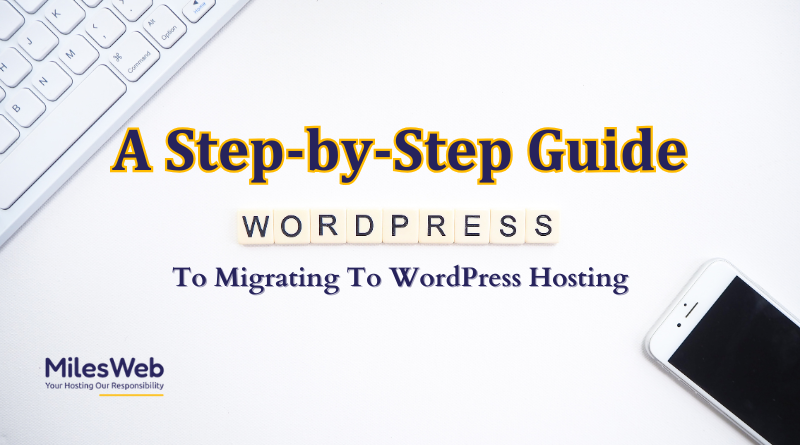
WordPress web hosting services are the best way to get a reliable hosting infrastructure for WP websites. There are different plugins, themes, and resources involved in the WordPress hosting plans. Also, WordPress hosting charges of these plans are cost-effective which results in a higher ROI.
So, are you planning to migrate to premium managed WordPress hosting servers? This is a quick step-by-step guide that includes all insights about the migration process in the blog. Let’s delve deeper into it and find the right guidance on the migration process.
WordPress web hosting service is a web hosting solution specifically optimized to support WordPress websites. It offers a web hosting environment customized to the performance, security, and technical requirements of WordPress, ensuring all platforms run efficiently and reliably. These web hosting services come with pre-installed WordPress, automatic updates, and features such as 1-click staging, custom themes, and WordPress specific support.
There are two primary types of WordPress hosting services. First is shared hosting and the next one is managed WordPress hosting. If you are looking for a budget-friendly option with basic features, shared ones are more suitable. Managed WordPress hosting, on the other hand, includes enhanced performance optimizations, advanced security features, and dedicated customer support.
Before beginning the website migration process, it is essential to select a website hosting plan that meets the website’s requirements. Research different web hosting providers and compare their WordPress specific features, like performance optimization, security measures, and customer support. Consider factors like your website's traffic, storage needs, and budget to ensure the hosting plan aligns with your goals. Shared hosting might be sufficient for smaller sites, while larger businesses or high-traffic blogs may benefit from managed WordPress hosting.
After you’ve chosen a particular hosting plan, subscribe and set up your new hosting account. Most WordPress hosting providers make it easy to onboard and set up your server environment. Now you are ready to digest the hosting control panel because that is your lifeblood of managing files, databases, and other hosting related settings.
"MilesWeb Internet Services Pvt Ltd"
Let’s Talk: sales@milesweb.com
So, before making any changes at all, create an entire copy of your current website. It's an important step such that if anything fails in the course of migrating the data, there is no loss. A good backup tool from your current host, or a plugin like UpdraftPlus or BackupBuddy, should be used to back up all files, databases, and configuration.
Back up the files in a safe place like a cloud service to protect them. Make sure all files and data are in the backup so that if anything, it can be restored, seamlessly. Having a comprehensive backup is a safety net and gives you peace of mind to go on with the migration.
Migrate your website, and transfer the website files and databases to the new WordPress hosting environment. Many web hosting service providers offer free migration services, so check if the chosen web host offers this option. Alternatively, you can use a migration plugin like Duplicator or All-in-One WP Migration to automate the process.
If you do not wish to automate the migration, using an FTP client such as FileZilla to download the files for your website from the old host and upload them to the new server will do. Export your database (using phpMyAdmin or whatever tool you have installed), and import it into the new hosting account. To provide valid database credentials for your new hosting environment, update the wp-config.php file.
After the migration, test your site thoroughly on the new hosting platform to make sure that everything works as it’s supposed to. Make sure to check all pages, links, and functionalities (forms and interactive elements) to make sure they all work properly. Also, check your website’s performance and loading times, and if WordPress hosting will help you improve those.
For example, update your domain’s DNS to point to your new hosting provider, or perhaps eventually transfer your domain to our registrar. It may take 48 hours for this step to fully propagate. During this period you can monitor your website to fix any problems that may arise.
Make your WordPress website migration an easier task by choosing MilesWeb. The web hosting provider offers free website migration services with an updated themes directory, a 30-day money-back guarantee, free SSL, automatic WordPress updates, and others.
MilesWeb offers ample resources SSD NVMe storage, unmetered bandwidth, and more resources. Follow this guide to get a good migration step and get your website live online. Make your website live and scale it exponentially.